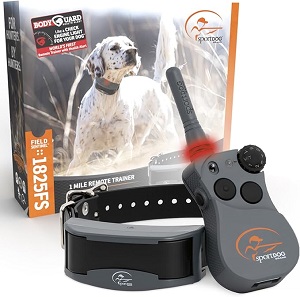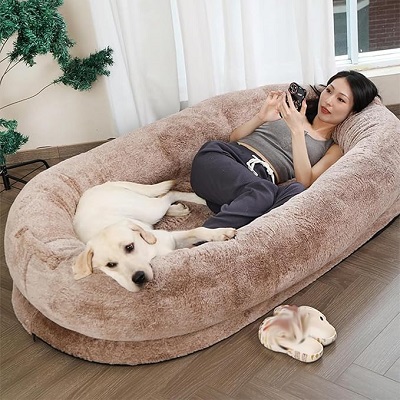
Why Does My Dog Lick Everything What It Could Mean
Why Does My Dog Lick Everything Understanding Excessive Licking Behavior
Introduction
If you’ve noticed your dog licking everything in sight—from their paws and the floor to your hands and furniture—you may be wondering what’s driving this behavior. While occasional licking is normal for dogs, excessive licking can indicate underlying issues that may need attention. In this article, we’ll explore the reasons behind your dog’s licking behavior, what it could mean, and when to seek help.
1. Natural Instincts
Grooming Behavior
Dogs instinctively lick themselves as part of their grooming routine. This behavior helps them keep their fur clean and free from dirt and parasites. You may notice your dog licking specific areas, such as their paws or face, to groom themselves.
Exploration and Communication
Dogs use their mouths and tongues to explore their environment. Licking can be a way for dogs to gather information about their surroundings. They may lick new objects, people, or other animals to understand their scents and textures better.
2. Signs of Affection
Essentials for Your Newly Adopted Pet
Welcoming a shelter pet into your life is a beautiful journey. Here are some handpicked items to help your new friend feel safe, loved, and right at home:
Bonding with Owners
Licking can also be a sign of affection and bonding. When dogs lick their owners, they may be expressing love and seeking attention. This behavior can be especially pronounced in puppies, who often lick their mother and siblings as a way to show affection and maintain social bonds.
Greeting Behavior
When greeting people, dogs may lick as a way of saying hello. This friendly behavior can indicate excitement and a desire for interaction. If your dog licks you when you come home, they may be expressing happiness at your return.
3. Anxiety and Stress
Nervous Behavior
Excessive licking can be a coping mechanism for dogs dealing with anxiety or stress. When faced with stressful situations, such as loud noises, changes in routine, or unfamiliar environments, dogs may lick themselves or their surroundings as a way to soothe themselves.
Compulsive Licking
In some cases, licking can develop into a compulsive behavior. If a dog licks excessively to the point of causing irritation or injury to their skin, it may be a sign of an underlying anxiety issue that requires attention.
4. Medical Issues
Skin Irritations and Allergies
If your dog is licking a specific area persistently, it could indicate an underlying medical issue, such as skin irritation, allergies, or infection. Common allergens include pollen, dust mites, certain foods, and flea bites. Licking can exacerbate these issues, leading to further discomfort.
Pain or Discomfort
Dogs may lick areas of their body where they are experiencing pain or discomfort. If your dog is licking a particular spot excessively, it could be a sign of an injury or an underlying health problem. Always monitor your dog for other symptoms, such as limping, swelling, or changes in behavior.
5. Boredom and Lack of Stimulation
Excess Energy
Dogs require regular mental and physical stimulation to keep them engaged and happy. If they don’t receive enough exercise or mental challenges, they may resort to licking as a way to cope with boredom. This behavior can manifest as licking furniture, floors, or even themselves.
Engaging Activities
To combat boredom, provide your dog with a variety of toys, interactive games, and activities that stimulate their mind. Regular walks, play sessions, and training exercises can help keep your dog entertained and reduce excessive licking behavior.
6. When to Seek Help
Identifying the Root Cause
If your dog’s licking behavior is excessive, persistent, or accompanied by other concerning symptoms (such as hair loss, skin irritation, or behavioral changes), it’s important to consult a veterinarian. They can help identify the underlying cause and recommend appropriate treatment.
Behavioral Assessment
In cases where licking appears to be linked to anxiety or compulsive behavior, a certified dog trainer or behaviorist may be able to help. They can assess your dog’s behavior and create a tailored training plan to address the issue.
Conclusion
While licking is a natural behavior for dogs, excessive licking can signal underlying issues that require attention. By understanding the reasons behind your dog’s licking behavior—whether it’s grooming, affection, anxiety, or medical concerns—you can take appropriate steps to address the issue. Regular vet check-ups, providing mental stimulation, and ensuring a loving environment can help reduce excessive licking and improve your dog’s overall well-being.
Affiliate Products
We may earn a small commission when you shop through our links — it helps us keep sharing love and care for every dog out there, at no extra cost to you.
Up to 75% Discount

Dog Collar with Health Monitoring
BUY NOW »
Up to 55% Discount

Luxury Faux Furhuge Napping Bed
BUY NOW »

